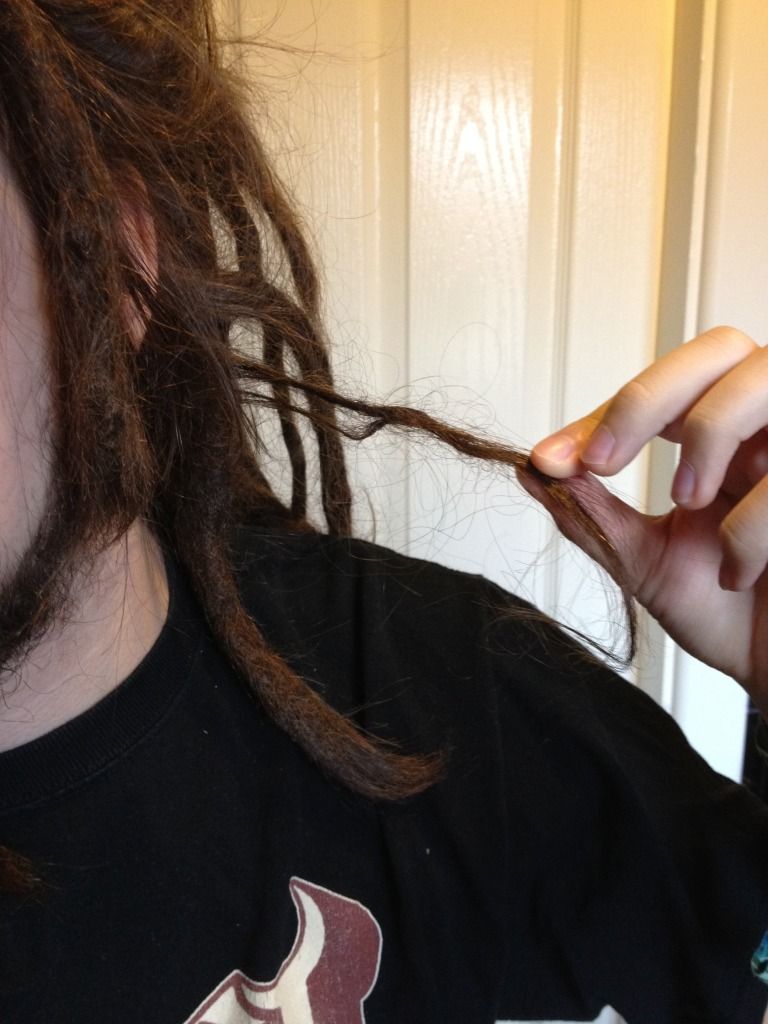What's the deal with loose hair? Loose hair is seemingly the bane of most dreadhead’s lives. Not all, but most.
Loose hair, it's like the anti-lock… literally. People see loose hair and they see it as negative progress, it’s messy, it’s undone, it’s the opposite of the way they want their hair to go and it’s really easy to stress and obsess. However, with locked hair, some unlocked hair is always going to be present, it’s unavoidable.
Starting with young locks loose hair is going to be most prevalent. Before you begin, all your hair is loose and your starting method of choice simply sets that loose hair up for the journey ahead (backcombing doesn’t create locked dreads, T&R doesn’t make locked dreads, the methods just hold those loose hairs in some sort of order while over time they lock - same time dependant process that plays out if you’re instead neglecting or free forming).
So, to begin, you’ve got a whole head of loose hair, you start your dreads so you’ve got your loose hair starting to separate into some sort of dread-like order and over time your hair is going to lock tighter and stronger into mature dreads. Ok cool, loose hair gone, right? Well, no.
Over time your loose sections will lock tighter, they’ll mature and become more rope-like. What was once a kind of semi-organised mass of sectioned loose hair will get some order to it. Loose hairs that were once poking out and forming patches should slowly begin to knot together and mat into the surrounding locks. Over time the total amount of looseness and loose hair will decrease, but there’s not a magic point where all of it disappears on its own… you just reach a sort of equilibrium.
At a certain level of dreadlock maturity you get to a point where loose hairs are getting locked in at the same rate as new hairs are either getting pulled loose or forming loose - so the total amount of loose hair remains the same. Washing and drying can work some hairs loose, every day life rubbing against them and pulling on them can pull some hairs loose. Plus you’re always shedding hairs, breaking hairs, whether your hair is locked or not, so you’ll have some baby hairs that have never been locked yet. These things are pretty much unavoidable. The same friction that causes hairs to interact and lock can also pull some loose.
The total amount of loose hair can vary over time and from person to person. That equilibrium point for your average amount of loose hair will be affected by how long the loose hairs are - shorter hairs are harder to lock so if your dreads are short or if you’ve trimmed the loose hair shorter, it’ll be less likely to lock on it’s own. If you have naturally soft hair or your hair is excessively moisturised or conditioned, you’re more likely to have loose hairs. Same with if your hair is particularly oily, either naturally or from the balance left by your shampoo - hairs near your skin, eg face, ears or neck pick up oils from your skin and are less likely to lock on their own. And also seasons can affect loose hairs - dry winter months can often cause more hairs to lock compared to hotter, more humid months.
Even at 11 years in, I get loose hairs.. sometimes a lot, in summer, where it’s hot and humid, my hair is gets frizzy and loose - I get more loose hairs around my face where the hairs can catch oil from my skin. Whereas in winter when it can be cold and dry, I may find more hairs are locked down.
What can you do? Some people don’t really care and accept that dreadlocks aren’t something that is ever “completed”. Locked hair is always growing, changing, forming, you never reach a point where they’re done. Some people like this and just let the hair get on with it’s thing in the knowledge that sometimes they’ll be messier than other times. Whereas some will make sure to maintain their loose hair periodically to keep it more controlled. There are pros and cons to both views - leaving the hair alone is going to usually leave you with a higher level of peak frizz, whereas maintaining it is going to require constant upkeep overtime to maintain new loose hairs as they present themselves - even with maintenance, loose hair returns so some prefer to just let it sort itself so as to avoid the hassle and avoid risking obsessive maintenance that can damage the dreads if overdone over time.
Can I tell you how much loose hair you should expect given a certain age of dreadlock or a certain starting method? No, it all varies from person to person depending on the environment that the dreads are exposed to and the variables at play with the hair such as length and natural softness etc. Should I tell you how much you should maintain them, how often, what method you should use or whether you should maintain at all? That’s down to personal preference, depending on how you view your locks, how you’d like them to be and how you balance up the pros and cons involved with these decisions. What I can say for sure is that everyone is going to experience loose hair, EVERYONE. It’ll vary from person to person, but it’s there. Sometimes it’s better than other times, sometimes it’s worse. Don’t stress about it, don’t panic about it, remember that locking your hair is a continuous process and not a one time thing.

